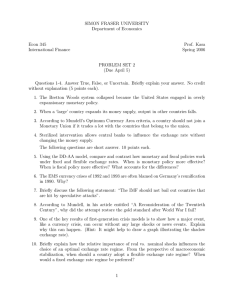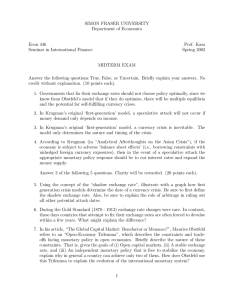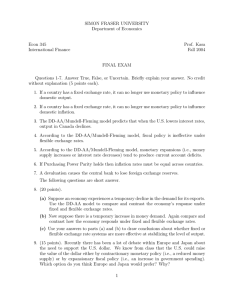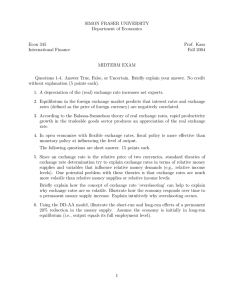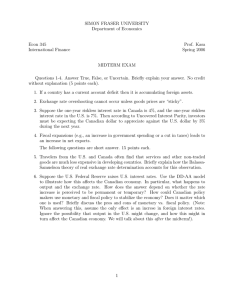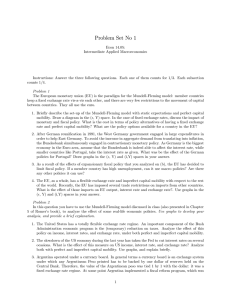SIMON FRASER UNIVERSITY Department of Economics Econ 345 Prof. Kasa
advertisement
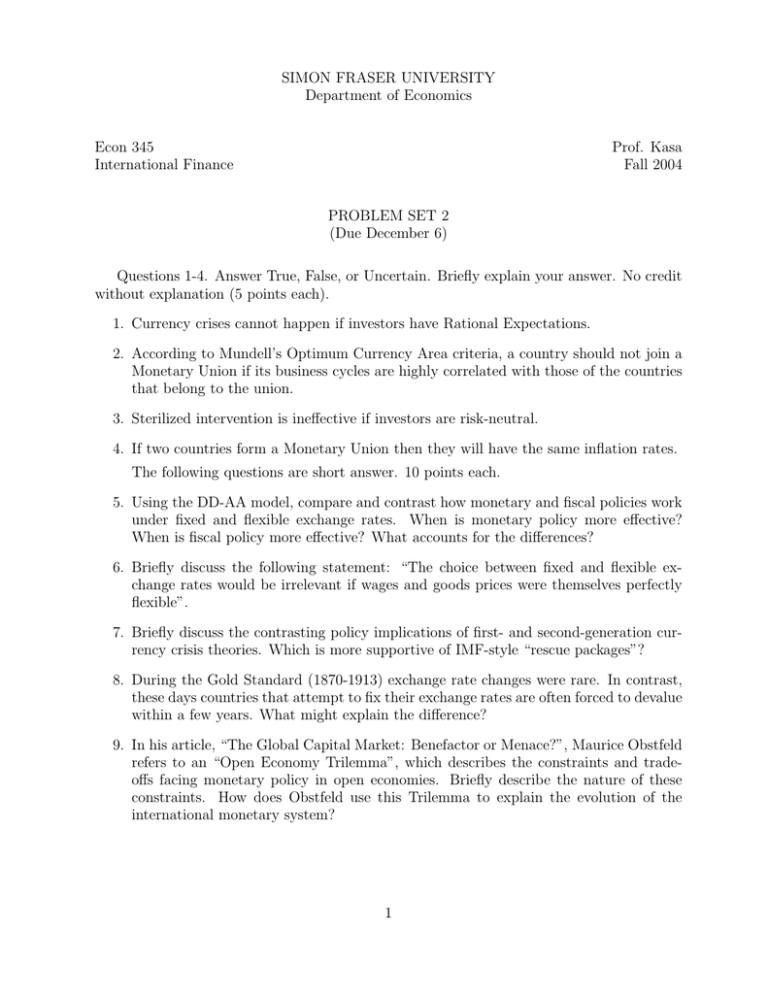
SIMON FRASER UNIVERSITY Department of Economics Econ 345 International Finance Prof. Kasa Fall 2004 PROBLEM SET 2 (Due December 6) Questions 1-4. Answer True, False, or Uncertain. Briefly explain your answer. No credit without explanation (5 points each). 1. Currency crises cannot happen if investors have Rational Expectations. 2. According to Mundell’s Optimum Currency Area criteria, a country should not join a Monetary Union if its business cycles are highly correlated with those of the countries that belong to the union. 3. Sterilized intervention is ineffective if investors are risk-neutral. 4. If two countries form a Monetary Union then they will have the same inflation rates. The following questions are short answer. 10 points each. 5. Using the DD-AA model, compare and contrast how monetary and fiscal policies work under fixed and flexible exchange rates. When is monetary policy more effective? When is fiscal policy more effective? What accounts for the differences? 6. Briefly discuss the following statement: “The choice between fixed and flexible exchange rates would be irrelevant if wages and goods prices were themselves perfectly flexible”. 7. Briefly discuss the contrasting policy implications of first- and second-generation currency crisis theories. Which is more supportive of IMF-style “rescue packages”? 8. During the Gold Standard (1870-1913) exchange rate changes were rare. In contrast, these days countries that attempt to fix their exchange rates are often forced to devalue within a few years. What might explain the difference? 9. In his article, “The Global Capital Market: Benefactor or Menace?”, Maurice Obstfeld refers to an “Open Economy Trilemma”, which describes the constraints and tradeoffs facing monetary policy in open economies. Briefly describe the nature of these constraints. How does Obstfeld use this Trilemma to explain the evolution of the international monetary system? 1
